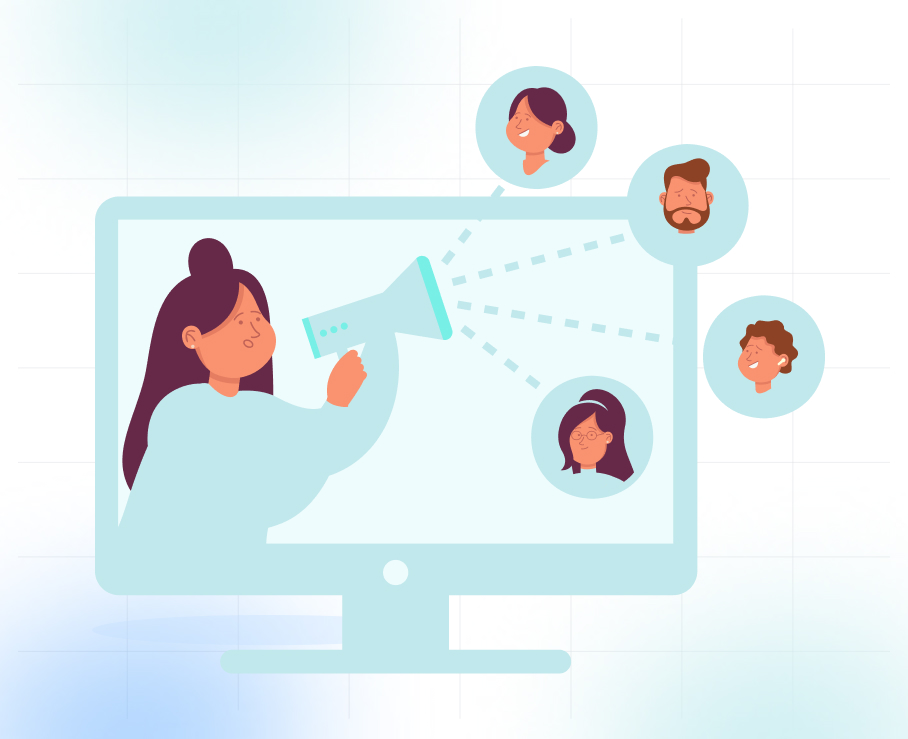
How to Set Sales Qualified Lead Appointments

In B2B sales, timing is everything. Yet 41% of companies struggle to follow up with leads. That delay can cost you the deal, especially when today’s buyers expect fast, relevant engagement from vendors who understand their needs.
But here's the real issue: even when you do respond, not every lead is worth your sales team's time. Many are still window-shopping, and others simply aren’t the right fit. That’s why setting appointments with Sales Qualified Leads (SQLs)—those ready to talk and have buying power—is critical for pipeline efficiency and revenue growth.
In this guide, we’ll walk you through how to identify SQLs, craft outreach that gets responses, and book high-quality meetings with decision-makers. Before diving into the strategies, let’s get clear on what we aim for.
What Are Sales Qualified Lead Appointments?
A Sales Qualified Lead (SQL) meets key criteria such as company size, industry, decision-making authority, budget, and urgency, and is ready for a serious sales conversation. Unlike Marketing Qualified Leads (MQLs), who show early interest, SQLs are qualified based on behaviors, lead scoring, and alignment with your Ideal Customer Profile (ICP).
This is where SQL appointments truly stand out. When campaigns are built with precise segmentation, thoughtful personalization, and lead scoring, email becomes a powerful tool to nurture, qualify, and convert leads. Instead of chasing cold contacts, your sales team meets with informed, engaged prospects—already warmed up through targeted email sequences tailored to their stage in the buying journey.
To understand the full impact, let’s explore why SQL appointments are essential for B2B teams aiming to convert email engagement into predictable revenue.
Why SQL Appointments Matter for B2B Sales Teams?

In B2B sales, setting SQL appointments is crucial because it helps teams focus efforts strategically, boosting efficiency and driving predictable revenue growth.
Here’s why these qualified meetings matter:
1. Optimize Time and Resources
SQL appointments ensure your sales reps spend their time where it counts—closing deals instead of chasing unqualified leads. This saves hours of prospecting and increases overall sales productivity.
2. Improve Pipeline Efficiency
Focusing on qualified leads cleans up your sales funnel, making forecasting revenue and accelerating the sales cycle easier.
3. Increase Monthly Recurring Revenue (MRR)
By targeting prospects who fit your Ideal Customer Profile, SQL appointments lead to higher conversion rates and more consistent revenue growth.
4. Reduce Customer Churn
Engaging qualified prospects early means better aligning solutions to their needs, improving customer satisfaction, and retention.
5. Benefit Sales Reps and the Entire Organization
While sales reps benefit directly by entering meetings with informed, interested buyers, the company enjoys a more predictable and scalable sales process.
When SQL appointments are done right, they transform your sales team’s efficiency and your company’s bottom line. But getting to that point isn’t always easy—many B2B teams struggle with the same frustrating roadblocks.
So, let’s explore the key challenges you might be facing when setting Sales Qualified Lead appointments.
Key Challenges in Setting Sales Qualified Appointments

Booking Sales Qualified Lead appointments is critical, but many B2B teams struggle with obstacles that reduce effectiveness and waste resources. Let’s break down the main challenges that often hold teams back:
1. Difficulty Reaching the Right Decision-Maker
In B2B sales, the decision-making process involves multiple stakeholders. Getting past gatekeepers and connecting directly with key decision-makers requires research, persistence, and strategic outreach. Without the right approach, leads can stall indefinitely in early stages.
2. Lead Fatigue from Overused Cold Outreach
Prospects are bombarded daily with generic cold emails and sales calls. Repeated, untargeted outreach causes lead fatigue, resulting in lower open rates, fewer responses, and negative brand perception. Maintaining engagement requires more personalized and value-driven communication.
3. Low-Quality Leads Due to Poor Targeting
Generating leads without strict qualification criteria leads to wasted efforts on prospects that don’t fit your Ideal Customer Profile (ICP) or lack genuine purchase intent. This dilutes sales focus and clogs pipelines with unqualified opportunities.
4. Lack of Clear Segmentation and Lead Scoring
Without clear segmentation and a robust lead scoring system, it’s difficult to prioritize prospects effectively. Leads get treated as equal when, in reality, some require immediate attention while others need further nurturing. This inefficiency leads to missed revenue and longer sales cycles.
By combining targeted data, personalized multi-channel outreach, and structured lead scoring, these challenges can be turned into scalable wins:
- Data‑Driven Targeting ensures only high‑potential prospects enter your funnel, based on strict ICP criteria and real‑time firmographic filters.
- Value‑Led Campaigns reduce lead fatigue through well‑timed, personalized touchpoints that speak directly to prospect pain points.
- Segmented Sequences + Scoring prioritize outreach using engagement behavior and contextual lead tags—so sales teams focus where it counts, not chasing cold, low‑intent leads.
This methodology is central to TLM’s appointment-setting process and is outlined in their detailed approach to qualified B2B lead generation—where every step is built to improve SQL volume, conversion speed, and pipeline quality.
Step-by-Step: How to Set SQL Appointments the Right Way

To set SQL appointments effectively, it’s important to follow a clear process that ensures the right prospects are engaged at the right time.
Here are the key steps to follow to schedule SQL appointments efficiently and keep the sales process on track.
Step 1: Define Your Ideal Customer Profile (ICP) with Precision
A clearly defined ICP is the cornerstone of successful SQL appointment setting. It helps you target only those prospects who match your product or service offering, boosting efficiency and conversion rates.
To define your ICP effectively:
- Analyze top-performing customers to identify common traits.
- Specify firmographics like industry, company size, and geography.
- Identify key decision-makers and their buying triggers.
- Document pain points, budget ranges, and purchase timelines.
Your ICP narrows the focus, ensuring every outreach is relevant and impactful.
Step 2: Build Targeted, Verified Prospect Lists
With your ICP as a guide, the next step is assembling high-quality prospect lists. Precision here minimizes wasted outreach and maximizes engagement potential.
Best practices for list building:
- Use reliable business data and professional networks to streamline your outreach and boost lead generation efforts.
- Filter prospects strictly according to your ICP criteria.
- Prioritize leads showing buying signals like recent funding or product launches.
- Regularly clean and update your lists—consider using professional list cleaning services to maintain accuracy and improve deliverability.
Targeted, accurate prospect lists cut down on outreach fatigue and improve your chances of landing qualified appointments.
For a deeper dive into list-building strategies, read this guide on how to build effective B2B email lists.
Step 3: Develop Hyper-Personalized Outreach Messaging
Generic emails are easy to ignore. Personalized, relevant messaging grabs attention and starts meaningful conversations.
To personalize effectively:
- Tailor subject lines and email openings to each prospect's role and business challenges.
- Incorporate specific details like company news, industry trends, or pain points.
- Use case studies and social proof to build credibility.
- Keep messaging concise, clear, and focused on benefits.
Personalization builds trust and sets the stage for engagement. To go deeper, this guide on effective targeted email marketing walks you through how to craft emails that resonate, convert, and keep prospects engaged throughout the funnel.
Step 4: Implement Multi-Touch, Data-Driven Email Campaigns
One email rarely closes a deal. A thoughtfully designed sequence nurtures leads, gradually moving them closer to a meeting.
Key elements of effective campaigns:
- Plan 3 to 5 touchpoints with varied content and CTAs.
- Use educational content early, shifting toward direct meeting requests later.
- Monitor opens, clicks, and replies to score lead interest.
- Adjust frequency to avoid overwhelming prospects but maintain momentum.
At TLM, we specialize in designing and executing multi-touch email campaigns that combine data analytics with behavioral lead scoring. Our tailored sequences optimize timing and messaging to convert cold prospects into Sales Qualified Leads, significantly improving appointment rates and pipeline quality. Leveraging automation and personalization at scale reduces lead fatigue and increases meaningful engagement.
Step 5: Secure Appointments Through Clear, Responsive Scheduling
Reducing scheduling friction is essential to lock in meetings when prospects indicate interest.
Best Practices:
- Offer multiple time slots to suit their calendars.
- Confirm details promptly with clear expectations.
- Send reminders to minimize no-shows.
How TLM Layers On:
TLM’s end-to-end appointment process ensures prospects flow seamlessly from interest to scheduled meeting:
- Response Handling: TLM filters neutral to positive replies, identifying potential leads through subtle cues like pricing questions, technical inquiries, or interest in references.
- Thoughtful Engagement: Every response is handled with care, whether the prospect asks for more information, references, or reveals that they aren’t the decision-maker.
- Schedule Coordination: TLM offers a few time slots to avoid back-and-forth emails, confirming availability before sending invites.
- Calendar Setup: Appointments are added to your calendar only after confirmation from all parties. TLM monitors invite acceptance and follows up if needed.
- Pre-Call Form (Optional): A no-obligation form is sent to gather basic information about the prospect, helping your team prepare for the call.
TLM handles every step with precision, so your team can focus on closing deals, not chasing leads.
Step 6: Execute a Comprehensive Lead Handoff to Sales
A qualified lead isn’t fully won until your sales team is equipped to engage effectively.
Ensure a smooth handoff by:
- Providing detailed lead profiles, including engagement history and pain points.
- Sharing notes on objections or concerns raised during nurturing.
- Aligning on next steps and timelines.
- Using CRM tools to track progress and feedback.
Detailed handoffs enable personalized follow-up and higher close rates.
A structured lead transfer—with full context and CRM-triggered alerts—helps ensure timely follow-up, better alignment, and higher close rates. You can explore this process further in this guide on what sales teams should do with marketing-qualified leads.
Following these steps creates a streamlined process that maximizes your chances of converting prospects into sales-qualified appointments and, ultimately, closed deals. However, adopting a specialized partner like TLM (The Lead Market) can truly change the game.
We serve clients across the USA, Canada, and Australia, with over 94% of our clients being Managed Service Providers (MSPs). Our approach is proven, delivering an ROI guarantee and backed by an impressive 88% customer retention rate.
How TLM (The Lead Market) Sets SQL Appointments?

TLM’s proven approach to setting Sales Qualified Lead appointments combines precision targeting, personalized outreach, and data-driven automation to deliver warm, sales-ready leads, eliminating the need for cold calling. Here’s how we do it:
- ICP-Aligned Databases: We start with meticulously curated prospect lists perfectly aligned to your Ideal Customer Profile, ensuring relevance and higher conversion potential.
- Email-First Outreach: Leveraging multi-touch, personalized email campaigns, we engage and nurture leads effectively before handing them over as SQLs.
- Real-Time Dashboards and Filters: Our intuitive dashboards provide live visibility into lead engagement, allowing you to prioritize the hottest prospects.
- In-House Tools: TLM offers an intuitive dashboard with email scripts and add-ons. Our team manages responses and schedules appointments, streamlining outreach and boosting efficiency.
- A/B Tested Email Scripts: Continual testing and optimization of messaging boost response rates and maximize qualified appointment setting.
Importantly, TLM delivers only warm, qualified meetings—no cold calls, no generic lists. Our pricing models are flexible to suit your needs, including Pay-per-Appointment or Monthly Retainer options.
Schedule a meeting today and discover how TLM can help your B2B sales team consistently scale qualified appointments and close more deals—faster.
FAQs
1. How do you generate sales-qualified leads?
By targeting decision-makers who fit your ICP, engaging them through personalized multi-step emails, and qualifying them based on intent signals, like pricing interest, or timeline readiness, only leads showing clear buying behaviour and meeting defined criteria are passed to sales.
2. How to set a sales appointment?
Once interest is confirmed, reply fast with 2–3 clear time options. Use scheduling tools (e.g. Calendly) that sync with your calendar. Set expectations with a short agenda and follow up with reminders. Simplicity, speed, and clarity increase conversion and reduce no-shows.
3. How do you calculate sales qualified leads?
Track the number of leads that meet sales criteria—typically BANT or CHAMP—plus clear engagement triggers. A basic formula:
SQLs = Leads that meet the qualification framework + show active buying intent.
Measure it monthly to monitor lead quality, not just volume.
4. What are qualifying leads in the sales process?
They’re prospects who match your ICP and show intent through meaningful actions—responding to outreach, engaging with high-value content, or requesting information. Qualification ensures sales doesn’t waste time on low-fit, low-interest contacts.
5. Can SQL appointment setting reduce cold calls?
Yes. With pre-qualified leads and email-first engagement, reps enter conversations with context, not scripts. This cuts cold outreach dramatically and shifts the focus to high-conversion conversations that move deals forward faster.






